Crossposting from Kitchen- my range hood
Whats InAName
8 years ago
last modified: 8 years ago
Featured Answer
Sort by:Oldest
Comments (19)
Whats InAName
8 years agoRelated Discussions
Finished my kitchen and have an extra range hood!
Comments (4)Hi John, I'm spec'ing appliances for a kitchen remodel and would be interested in finding out more. You can contact me through my gardenweb contact. Thanks, Vijoy...See Morecrosspost- range hood exhaust duct into crawlspace below
Comments (3)As I read your situation you'd have the xost going up then making a 180ú down under then probly another 90ú to horizontal.Something like that anyway. Be sure to size the duct diameter accordingly because each bend will be equivalent to several feet of straight duct. For example two 3 foot straight sections connected by a 90ú elbo might be equivalent to 10 feet of straight pipe. So you'll need to figure the equivalent straight line duct length then size it's diameter to reduce resistance. The instructions with the hood should provide enough info for you to figure it out. A 6 inch dia pipe has 44% more area than a 5 inch dia pipe. 5 inch is pretty much standard so watch it. If the pipe is too small the hood won't work for diddly. Don't count on the contractor to be able to handle that horribly advanced mathematical concept. Don't. We have a downdraft type cook top with 5 inch pipe. I shoulda been 6 inch. Total length is about 15 feet but the equivalent straight length is roughly 25 feet. It runs thru the crawl space and xosts to the outside. Most grease stops in a trap but the fan and housing collect a lot over the years. Not much if any goes into the pipe. It's a centrifugal fan so the grease gets thrown to the housing instead of being impelled along the duct. If your fan is not centrifugal that may not be true....See MoreTile layout help needed (Cross-post from kitchens)
Comments (5)Center the first tile in the middle of the stove and work right to left off that one. Due to grout you end up with sliver? I think all you can do is adjust the grout a bit to avoid the slivers. As for the end. I like the second picture where you continue the shorter up to the back wall and paint the area behing under the cabinet. I know that the small tiles on the ends of the wall may bug you now but after install you will not notice them. No one will. I installed my tiles in front of fireplace incorrectly, not centered. This cause tile on right to extend 2" farther than the left side. Not one person, even on close inspection, has noticed this. I also installed a slate floor tile wrong at base of stairs. Was staggering pattern like you but for some reason installed the slivers that ended up hitting stairs side by side. Not one person has noticed. But they are all fun reminders to me when I really, really think about it....See MoreNeed help around the range hood area of my kitchen
Comments (7)I've had this kind of arrangement in this house for 32 years. Yes, a better hood will do a better job of keeping them clean, but every now and then I take down all the pots and give them a good wash. The ones that are used all the time (about 3!) are never dirty but the others do eventually accumulate a bit of grease and dirt (and in my house, dog hair!). I still prefer my pots where I can quickly and easily get to them and I simply don't have enough storage in my kitchen to have them anywhere else unless I get rid of a lot of cooking stuff that, while only used occasionally, is needed when the occasion arises....See More3katz4me
8 years agoWhats InAName
8 years agolast modified: 8 years agoMichael M
8 years agolast modified: 8 years agojwvideo
8 years agolast modified: 8 years agoWhats InAName
8 years agostevep2005
8 years agoKitchen Magic
8 years agokaseki
8 years agopauls234
8 years agojwvideo
8 years agolast modified: 8 years agopauls234
8 years agokaseki
8 years agokaseki
8 years ago
Related Stories
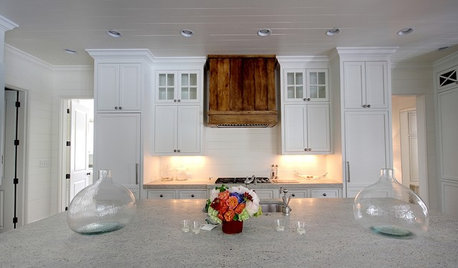
KITCHEN DESIGNWood Range Hoods Naturally Fit Kitchen Style
Bring warmth and beauty into the heart of your home with a range hood crafted from nature's bounty
Full Story
KITCHEN APPLIANCESWhat to Consider When Adding a Range Hood
Get to know the types, styles and why you may want to skip a hood altogether
Full Story
5 Stunning Modern Range Hoods
Today's kitchen range hoods can look like sleek sculptures. Here's what to look for when you go shopping for one
Full Story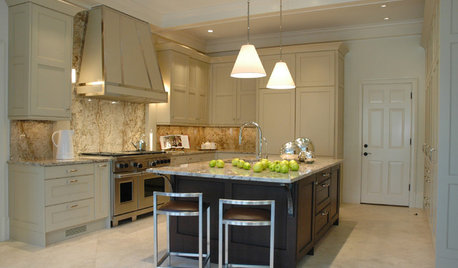
KITCHEN DESIGN8 Industrial-Luxe Kitchen Hood Styles
Make a Statement with Show-Stopping Metal Range Hoods
Full Story
KITCHEN DESIGNWhat to Know When Choosing a Range Hood
Find out the types of kitchen range hoods available and the options for customized units
Full Story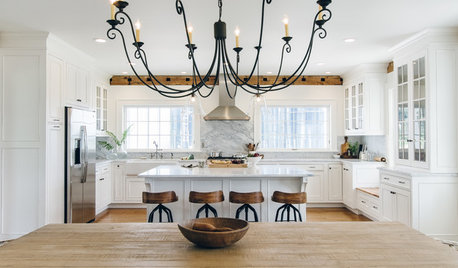
WHITE KITCHENS4 Dreamy White-and-Wood Kitchens to Learn From
White too bright in your kitchen? Introduce wood beams, countertops, furniture and more
Full Story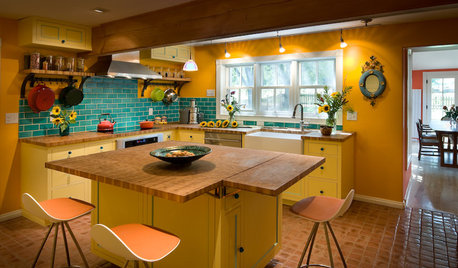
COLORFUL KITCHENSKitchen of the Week: From Style Mishmash to Streamlined Farmhouse
Vibrant colors and rustic materials give an 1800s Colorado kitchen a thoughtful contemporary update
Full Story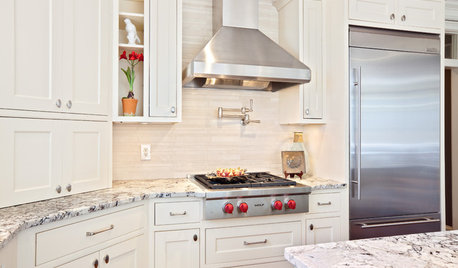
KITCHEN DESIGNHome Above the Range: Smart Uses for Cooktop Space
With pot fillers, shelves, racks and more, you can get the most function out of the space above your kitchen range
Full Story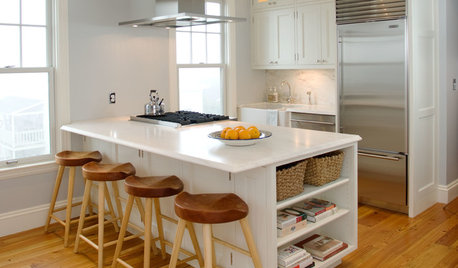
KITCHEN DESIGN20 Kitchen Must-Haves From Houzz Readers
We asked you to tell us your top kitchen amenities. See what popular kitchen features made the list
Full Story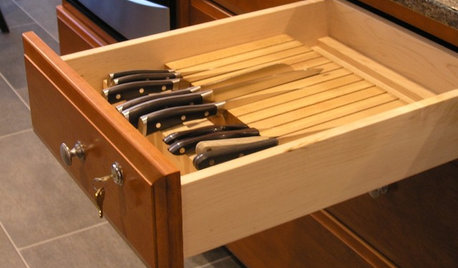
REMODELING GUIDESFrom the Pros: 8 Reasons Kitchen Renovations Go Over Budget
We asked kitchen designers to tell us the most common budget-busters they see
Full Story


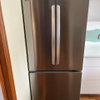
barnaclebob